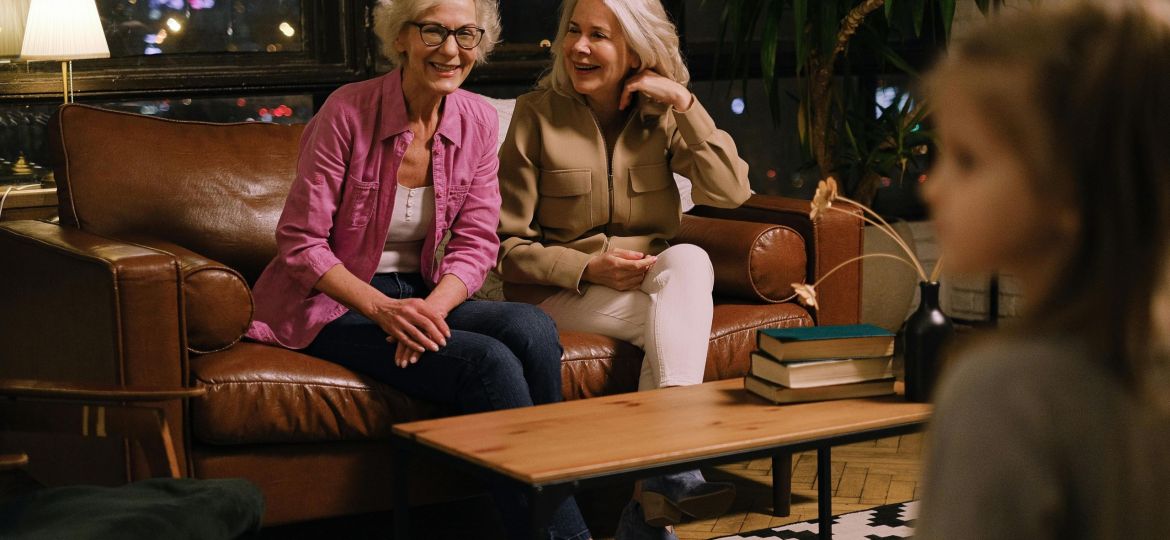
Picture this: it’s a scorching summer day in Arahal, near Seville, and the temperature is climbing past 40°C (104°F). The kind of heat that sends everyone scrambling for air conditioning or into the shade of whatever awning they can find. But instead of the usual plastic canopies that flutter and tear in the wind, the streets are draped with something extraordinary – a magnificent tapestry of crocheted squares in brilliant blues, sunny yellows, and vibrant greens, stretching 60 metres long and covering 500 square metres of shopping street.
This isn’t just any street art. This is what happens when 300 local women, led by Isabel Calasanz from Katia’s Haberdashery, decide to tackle climate change one crochet hook at a time. Over three years, they used more than 2,000 balls of UV-resistant synthetic yarn to create these stunning canopies. But here’s the brilliant part: these handcrafted covers cost 60% less than conventional plastic awnings, last three times longer, require zero maintenance, and – as Isabel puts it – offer “infinite beauty.”
When the plastic awnings failed, these women didn’t just complain – they reimagined urban infrastructure entirely. Using synthetic yarns specifically designed to resist UV rays and rain, they created functional art that combats extreme heat while bringing their community together. And the best part? The idea is spreading like wildfire across Spain.
The Spanish Crochet Revolution
What started as a local solution in Arahal has become a movement rippling across Andalusia. In Alhaurín de la Torre near Málaga, Eva Pacheco, a local crochet teacher, was approached by the city council’s Department of the Environment three years ago. They wanted to replace their tired plastic tarps with something more sustainable and beautiful.
Eva and her dozen students rose to the challenge, creating a massive patchwork of crocheted squares that now blankets their main shopping corridor. Each summer, they add more sections – using recycled fabric in geometric patterns, organic shapes that radiate like stepping stones, and symbols chosen by the students themselves. Their canopy now covers nearly 500 square metres, and shoppers walk underneath admiring the changing patterns above.
The movement has caught on in Coín, where locals have created their own multicoloured sunshades that leave visitors “taken aback, instantly whipping out their phones to photograph the sight.” Similar projects have sprung up in La Línea de la Concepción and other Spanish towns, each community adding its own creative twist to the concept.
What makes these projects particularly brilliant is how they solve multiple problems at once. They provide essential cooling in an era of rising temperatures, support local businesses by creating more comfortable shopping environments, bring communities together through collaborative craft work, and create tourist attractions that draw visitors specifically to see these “streets full of crochet.”
This Spanish crochet revolution represents something profound: the transformation of traditional “women’s work” into essential urban infrastructure. These aren’t just pretty decorations – they’re climate adaptation strategies wrapped in community art, proving that sometimes the most practical solutions are also the most beautiful.
The Climate Warriors of Switzerland
Here’s the irony: while Spanish grandmothers were literally knitting solutions to climate change, over 2,000 women over 64 in Switzerland decided they needed to tackle their government about the very same issue – both for themselves and for future generations. Switzerland, as it happens, has one of the most severe problems with global warming in Europe, as their rapidly melting glaciers dramatically testify.
In a country where women weren’t granted the right to vote until 1971 – much later than most other European countries – these grandmother activists faced an additional challenge: entrenched attitudes about what older women should be doing with their time. Stefanie Brander, one of the Climate Seniors, put it bluntly: “Old women are made to look after little children, to knit, etc. This is still a very deeply rooted cliché in the Swiss mentality. It’s not a coincidence that we waited so long to obtain our civil rights.”
So when Rosmarie Wydler-Wälti and her fellow KlimaSeniorinnen (Climate Seniors) took their government to the European Court of Human Rights, they weren’t just fighting climate inaction – they were challenging decades of being underestimated. Their argument was profound in its simplicity: Switzerland’s inadequate climate action was literally putting their lives at risk, and they had every right to demand better.
“We keep asking our lawyers, ‘Is that right?’. And they tell us, ‘It’s the most you could have had. The biggest victory possible’,” said Wydler-Wälti after their historic April 2024 victory. The court ruled that Switzerland was violating their human rights by failing to take adequate action on climate change.
Bruna Molinari, 81 and struggling with asthma that worsens with heat, captured the intergenerational spirit driving their case: “As a grandmother and mother, I think they have the right to have a climate that is better than the one we have,” she said, coughing throughout her interview. Their victory set a precedent that will influence climate litigation worldwide.
The Kitchen Revolution: Nonnas of the World
In Staten Island, New York, Maria Gialanella, 88, has become something of a local celebrity. Known for making ravioli by hand and rich ragùs, she cooks at Enoteca Maria, where grandmothers from around the world share their culinary traditions. Speaking to reporters, she radiates pride in sharing her family recipes from near Naples: “Everybody likes it, so I’m very happy.”
Restaurant owner Jody Scaravella dreamt up this unique concept in 2007 after losing his own grandmother and mother. In interviews, he explains how he missed the culinary wisdom of the women in his family and sought to recreate that experience. The restaurant employs rotating nonnas from Italy, Japan, Peru, Sri Lanka, Uzbekistan, Egypt, Taiwan, Azerbaijan, and beyond. The concept has proven so compelling that Netflix has featured the restaurant in a film.
Nonna Kathy from Uzbekistan discovered the restaurant by chance while dining with her son. Now she regularly cooks traditional dishes like Pirozhki and Golubci, experiencing something that restaurant manager Paola Vento describes as magical: customers spontaneously give the visiting nonnas standing ovations at the end of each evening. As Scaravella told Travel + Leisure, these women are “packed with culture and they need an outlet” after their families have grown and moved away.
The Garden Heroes of Brazil
In Fortaleza, Brazil, the Social Gardens project represents one of the most ambitious community transformations led by and for elderly people. Colonel Sérgio Gomes Cavalcante, founder of the project and Special Coordinator for Senior Citizens of Fortaleza, started with a simple recognition: elderly people in the city’s periphery faced vulnerability and isolation that gardens could help address.
The project has involved more than 2,000 families of vulnerable elderly, directly benefiting about 24,000 people annually and producing an estimated 20 tonnes of vegetables. But the numbers only tell part of the story. Colonel Cavalcante explains his motivation in an interview: “A principal lição é fazer por amor e buscar, de alguma forma, transformar as vidas dessas pessoas” (The main lesson is to do it out of love and seek, somehow, to transform these people’s lives).
The transformation has been profound, as participants attest. Maria de Fátima Ferreira, a 71-year-old retiree from Conjunto Palmeiras, captured the practical impact perfectly: “Pra quem gosta de verdura, tudo é caro. E agora com a horta é uma benção de Deus. Vou participar de todas as colheitas com certeza” (For someone who likes vegetables, everything is expensive. And now with the garden it’s a blessing from God. I’ll definitely participate in all the harvests).
For Francisco Silva, 82, the timing couldn’t have been better. Speaking about his diabetes and high blood pressure, he told reporters: “Me passaram uma dieta, por conta da diabetes, pressão alta. Pense! Agora vai me ajudar muito na alimentação. Essa horta chegou na hora certa” (They gave me a diet because of diabetes and high blood pressure. Think about it! Now it’s going to help me a lot with my diet. This garden came at the right time).
The gardens serve as more than food sources – they’re community healing spaces. Project reports document how elderly participants with depression and chronic diseases report feeling significantly better, with the gardens serving as occupational therapy for those with psychological problems, including dementia. As one assessment noted, participants experience “the pleasant sensation of reaping what they help to plant,” which dramatically raises their self-esteem and sense of purpose.
The Common Threads
What connects these diverse stories is how traditional skills – knitting, cooking, gardening – become vehicles for community transformation when combined with collective action and intergenerational purpose. Whether it’s Isabel Calasanz in Seville coordinating the creation of crocheted canopies that cost 60% less than conventional awnings and last three times longer, or the Climate Seniors using their life experience to challenge government inaction, these women are redefining what ageing looks like.
These stories challenge us to reconsider what we might be overlooking. As the Seville example beautifully demonstrates, the transition from hobby to sustainable urban infrastructure can happen when we recognise the potential in traditional skills. The Swiss grandmothers showed that lived experience is a form of expertise that courts must recognise. The Brazilian gardens prove that addressing food security and mental health can happen simultaneously when elderly people are seen as resources rather than burdens.
The Ripple Effect
These initiatives create ripple effects far beyond their immediate communities. The Swiss ruling influences climate litigation globally. The Brazilian garden model is being studied for replication in other cities across Latin America. Enoteca Maria has inspired documentaries and a Netflix film, spreading the concept of grandmother-led kitchens to audiences worldwide.
Maria Gialanella, despite being less than five feet tall, has become what her biggest fan calls “a powerhouse” who “goes around and does selfies” and “spends the night hugging people.” This captures something essential about these women: they’re not just preserving traditions – they’re actively creating new forms of community connection.
As the Climate Seniors proved in their European court victory, sometimes the most powerful argument for the future comes from those who have lived the longest. These grandmother revolutionaries are teaching us that the skills passed down through generations – the ability to create with our hands, to nourish others, to tend growing things, to persist in the face of challenges – aren’t just cultural artefacts. They’re tools for building the kind of communities we need for the future: sustainable, connected, creative, and resilient.

